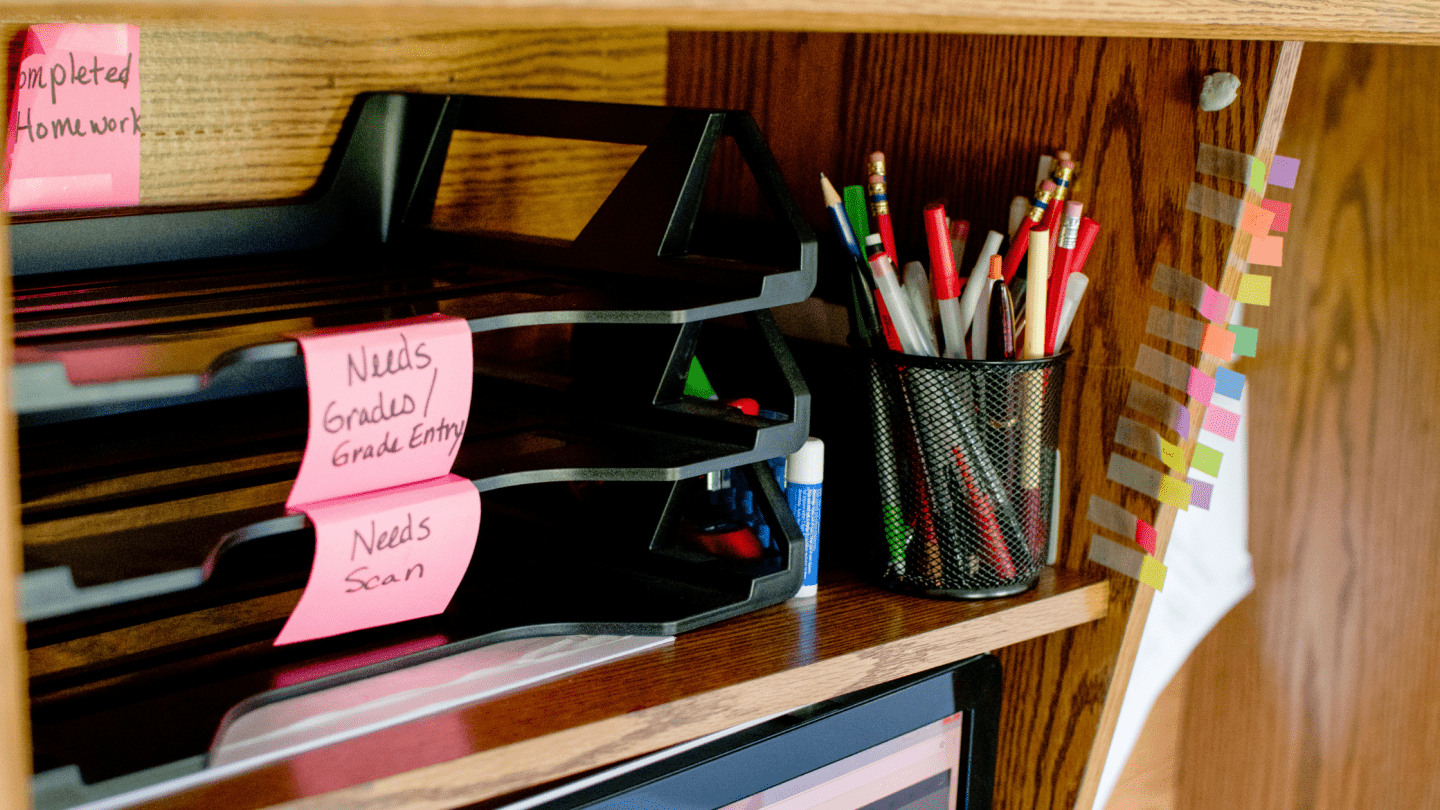Homeschool Record Keeping Made Simple
When I first started homeschooling, homeschool record keeping felt overwhelming, until I found a simple system that actually worked.
At first, I only tracked the basics, but as the years went on, having detailed records helped with everything from meeting state requirements to planning high school courses and even reflecting on our progress.
Whether you’re just starting out or looking to get more organized, keeping homeschool records doesn’t have to be complicated.
From attendance logs to portfolios, I’ll walk you through what to save, how to stay consistent, and tools that can make the process easier.

**This post may contain affiliate links. As an Amazon Associate and a participant in other affiliate programs, I earn a commission on qualifying purchases.**
Why Record-Keeping Matters
Keeping accurate homeschool records is more than just a legal checkbox, it’s a way to support your child’s long-term academic path.
States vary in what they require, but even in more relaxed areas, having organized documentation can make everything easier.
If your child ever transitions to public or private school, solid records can smooth the placement process.
And for high schoolers, detailed transcripts, course descriptions, and proof of grades become essential for college applications or scholarship opportunities.
Even if no one ever asks to see them, good records give you confidence and clarity about how your homeschool is progressing.
Essential Records to Maintain
Over the years, I’ve learned which records actually matter, and which ones just create clutter.
Here are the key things I’ve consistently kept and found useful, both for meeting state requirements and staying organized for my own peace of mind.
Attendance Logs
Some states require detailed attendance tracking, so I’ve made it a habit to jot down our school days using a simple printable planner. It only takes a minute a day and keeps me covered if I ever need to show we’re meeting the required hours.
Lesson Plans and Curriculum
I keep a running list of what we’re using, workbooks, online classes, even documentaries and field trips. Each year, I write out a rough plan of what subjects we’ll cover and what our goals are. It doesn’t have to be fancy, just enough to show we have a clear direction.
Grades and Assessments
I didn’t track grades early on, but once high school rolled around, I started logging quiz scores, test results, and even project feedback.
I use a simple grading rubric to stay consistent, and when it’s time to calculate GPA, I use our Homeschool GPA Calculator to make the process quick and accurate. It works for both 4.0 and 4.3 scales and includes options for honors/AP weighting.
This makes building transcripts much easier later.
Student Portfolios
I keep a few samples of my son’s writing, artwork, and science projects each term. It’s a great way to see growth over time, and honestly, it’s fun to look back on. I use a portfolio checklist to make sure I’m including a good mix without overthinking it.
Extracurriculars
Anything outside “core subjects” goes here: music lessons, sports, book clubs, co-op classes, and more.
These add color to your homeschool records and show that your child is getting a well-rounded education, even if it doesn’t look like a traditional school day.

Tools and Resources
There’s no one right way to keep homeschool records, it really depends on what fits your style. I’ve tried both digital and traditional methods, and honestly, a mix of the two works best for us.
Digital Solutions
If you prefer working online, there are some great homeschool apps and platforms that make tracking everything much easier. Some let you log attendance, grades, and lesson plans all in one place.
I’ve found tools like these especially helpful in high school, when transcripts matter more. HSLDA is also a great resource, they offer templates and legal info based on your state’s laws.
Traditional Methods
Some years, I’ve kept it old-school with a binder. I use dividers for attendance, subjects, and samples of work. It’s simple, but it gets the job done, and it’s easy to flip through when I need to pull something quickly.
I keep everything in one spot on a shelf, which helps me stay on top of it week to week.
Know Your State’s Requirements
Each state is a little different, so it’s worth checking the rules before you settle into a system. Some states want test scores or portfolios, others just want attendance.
I always double-check with our Department of Education and refer to HSLDA’s breakdown by state to make sure we’re covered. A little upfront research saves a lot of stress later.

Making Record-Keeping Manageable
The easiest way I’ve found to stay on top of homeschool record keeping is to build it into our routine. I take five minutes at the end of each day to jot down attendance and any highlights, like what we read, a project we worked on, or an unexpected rabbit trail we followed.
Then once a week, I’ll file away any finished work or update grades. Keeping it small and regular means I’m not scrambling later (especially when it’s transcript time or we switch gears mid-year).

Turning Record-Keeping into Something Meaningful
Record keeping used to feel like just another box to check, until I realized it could actually help me see how far we’d come.
Looking back at old portfolios gives me a clearer sense of what’s working, and a reminder of how much we’ve already accomplished. It’s encouraging, for both of us.
It’s not just about meeting legal requirements. Whether you follow a structured curriculum or lean more toward unschooling, keeping track of your child’s growth can be encouraging, for both of you. Plus, those little notes and saved projects become a keepsake of your homeschool years.
Last Updated on 22 August 2025 by Clare Brown



